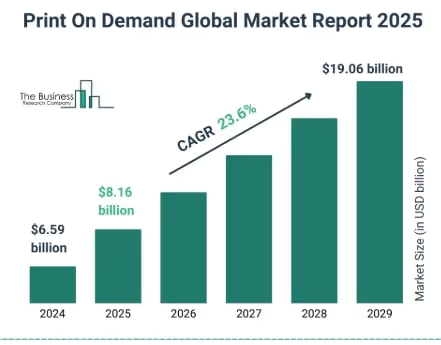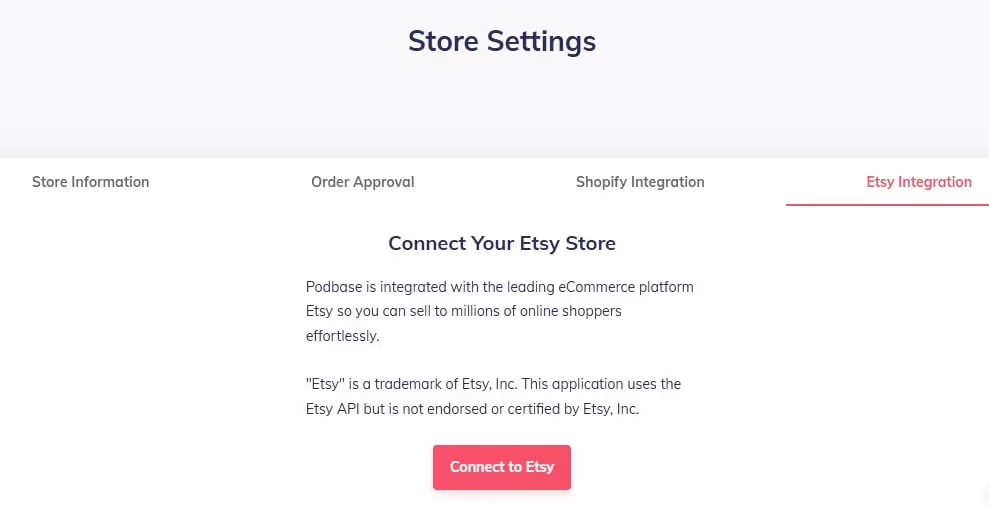Are you a designer, artist, or creative looking for ways to sell custom products online? Then, print-on-demand (POD) can be a profitable model for you.
It’s one of the few business models you can start with little to no upfront costs. This has increased its popularity over the last few years. Experts predict that the POD market will grow from 8.16 billion in 2025 to 19.06 billion by 2029.

The key to building a successful POD business and becoming part of this growth is choosing the right platform.
Podbase and Redbubble are two of the most popular options to consider. Redbubble works like a marketplace where you upload your designs, and the platform takes care of the rest. Podbase, on the other hand, gives you the freedom to create and grow an independent brand.
In this guide, we’ll compare Podbase vs Redbubble to help you pick a platform that fits your needs and goals.
Platform Model Differences
POD platforms operate in different ways. Here’s how Redbubble vs Podbase models compare:
What Is Podbase?
Podbase is a print-on-demand platform that lets you set up an online store without inventory. You can design and sell personalized tech accessories such as laptop cases, phone cases, and more with minimal startup costs.
When a customer places an order, Podbase prints the design on the chosen product and ships it directly. But unlike a marketplace, Podbase gives you full control over your brand.
Here’s what makes it stand out in this Podbase vs Redbubble comparison:
- You run your own dedicated online store
- Podbase connects easily with your chosen ecommerce platform
- You manage your own pricing, products, branding, and customer relationships
What Is Redbubble?
Redbubble is a busy POD marketplace where customers shop for cool designs. You simply create your designs and upload them to the platform. Redbubble then handles everything else from listings, printing, shipping, and customer service.
Unlike Podbase, Redbubble doesn’t allow you to sell under your own store and brand. Instead, your products sit alongside millions of others on Redbubble’s site. This means you’re competing against many other artists offering similar designs.
It’s a great option if you want exposure without managing a store. But if you plan to start a print-on-demand business, Redbubble offers limited control.
Also Read:
- DIY Small Business Ideas to Start From Home
- What Is Automated Dropshipping? How to Streamline Your Ecommerce
Pricing and Profit Margins
When comparing Podbase vs Redbubble, understanding their pricing and how much you keep after each sale is important. Let's discuss each platform’s structure:
Podbase Pricing Breakdown
Podbase offers clear, straightforward pricing and gives you full control over your profits. The platform provides you with the base cost for each product. This includes manufacturing and shipping costs.
You then set your final selling price and keep the entire profit. For example, if Podbase charges $15 to produce and ship a phone case, you can sell it for $25. This means you make a $10 profit.
The best part? There are no monthly platform fees or hidden charges.
Redbubble Pricing Breakdown
Redbubble uses a marketplace commission structure. The POD platform sets a base price for each product. This covers their manufacturing, shipping, and overhead costs. You then choose your markup or artist margin, which is the profit you expect to make.
But here’s the tricky part - you don’t control the final price.
Here’s what happens:
- Redbubble may lower product prices due to promotions
- Shipping and taxes vary, affecting your real margins
- You don’t see a final checkout breakdown
Plus, you have to pay platform fees, which further reduce your profits. So, when considering Podbase vs Redbubble, choose a platform with more earning potential and flexibility.
Product Offering and Quality
Your product type and quality will directly determine customer satisfaction levels, sales, and brand reputation. That’s why it’s a key factor to consider in this Podbase vs Redbubble comparison.
Here’s what you’ll get with these platforms:
What You Can Sell with Podbase
Podbase specializes in high-quality tech accessories and custom cases. Some top Podbase print-on-demand products you can easily make and sell include:
- Phone cases
- Laptop sleeves
- Tablet cases
- AirPod covers
- Screen protectors
If you're targeting gadget lovers, Podbase is a great alternative to Gelato, Redbubble, and other POD platforms. Plus, the platform uses durable, tough materials and double-checks each product for print quality.
Here are some tech accessories you can customize with Podbase:

What You Can Sell with Redbubble
Redbubble offers many product varieties, including:
- Apparel (t-shirts, hoodies, dresses)
- Home decor (pillows, blankets, tapestries)
- Accessories (bags, phone cases)
- Drinkware (mugs, water bottles)
- Art (stickers, art prints)
Redbubble is great if you want to put your designs on different items. But with different print providers producing various products, quality can become inconsistent.
If you don’t have the resources to print the products yourself, choosing a better print-on-demand service is the smartest choice. Podbase takes the win for this one in this Podbase vs Redbubble review.
Also Read:
- How to Make a Website to Sell Stuff (Without Any Inventory)
- How to Price a Product (Without Losing Profit)
Shipping and Fulfillment
Fast, reliable, and affordable shipping keeps your customers happy and coming back. Let’s see how Podbase vs Redbubble compare in terms of shipping and fulfillment:
Podbase Shipping Costs and Times
Podbase offers fast and predictable shipping timelines for all customer orders. The platform also provides transparent shipping costs based on your client’s location. Plus, you can use branded packaging, which builds customer trust and enhances brand awareness.
Here are the average delivery times to expect with Podbase:
- Europe: 1–3 business days
- US: 2–3 business days
- Global: 8–14 business days
With Podbase, your customers' products may even arrive earlier. The platform delivers 80% of orders within 24 hours. This improves customer satisfaction and reduces complaints and returns.
Redbubble Shipping Overview
Redbubble offers international shipping by partnering with local printers in different regions, such as:
- US
- UK
- Spain
- Germany
- Italy
- Netherlands
- Australia
- France
- Canada
- Czech Republic
This means they can print and ship products from a location closer to your customer. It’s a great way to reduce shipping times and costs.
But Redbubble shipping costs and production times can vary depending on the product, printer, and the customer’s location. Orders with multiple items may come from different printers, resulting in separate packages and varying delivery times.
Your items also arrive in generic packaging, which makes it difficult for customers to recognize your brand.
Customization and Branding
If you want to start a profitable print-on-demand business that attracts loyal customers, you need to create a unique brand. Let’s review Podbase vs Redbubble customization and branding features below:
Building a Brand with Podbase
Podbase empowers you to build a strong, independent, and memorable brand. You can set up your online store and sell products on Etsy, WooCommerce, or Shopify.
Podbase also allows you to:
- Use your own custom domain
- Add custom brand colors, fonts, and visuals
- Manage your product descriptions, pricing, and promotions
- Use branded packaging
- Access customer emails for follow-ups and retargeting
Branding Limitations with Redbubble
When comparing Podbase vs Redbubble, keep in mind that Redbubble offers few customization and branding options.
The platform allows you to create your own storefront. But your store and its overall look and feel remain within Redbubble’s site.
You can’t:
- Use your own domain name
- Customize product pages and branding
- Access customer emails and data
Since you don’t have access to customer information, you can’t promote your brand or grow your business.
Also Read:
Pros and Cons Comparison
Here are some Podbase vs Redbubble advantages and limitations to consider when selecting your ideal platform:
Podbase Pros and Cons
Pros:
- Full control over branding, pricing, and customer journey
- High-quality, niche tech products
- High, predictable profit margins
- Fast shipping
- Integrates easily with Shopify and Etsy

Cons:
- Requires self-promotions
- Smaller product catalog
Redbubble Pros and Cons
Pros:
- Easy to start
- Wide product variety
- Built-in audience
Cons:
- No branding and pricing control
- Lower and unpredictable profits
- Inconsistent product quality
- No access to customer data
- High competition
Final Verdict: Which Platform Is Right for You?
After comparing Podbase vs Redbubble, it’s clear that both platforms have their strengths and weaknesses. Choosing the right print-on-demand platform depends on your business goals.
If you want to create your own brand and grow a long-term business, Podbase is your best bet. It gives you full control over your products, profits, and customer experience.
But if you want to make some passive income from your art, Redbubble is a good place to start. You get exposure, but sacrifice branding and control.
So, choose wisely and start earning from your talent today!
Also Read:









